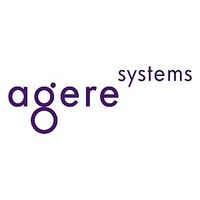T7256 Agere Systems, T7256 Datasheet - Page 53

T7256
Manufacturer Part Number
T7256
Description
(T7234 - T7256) Compliance
Manufacturer
Agere Systems
Datasheet
1.T7256.pdf
(60 pages)
Available stocks
Company
Part Number
Manufacturer
Quantity
Price
Company:
Part Number:
T72561ML
Manufacturer:
LUCENT
Quantity:
19
Company:
Part Number:
T7256A-ML
Manufacturer:
SAMSUNG
Quantity:
4 443
Part Number:
T7256ML2
Manufacturer:
LUCENT
Quantity:
20 000
Part Number:
T7256MLZ
Manufacturer:
LUCENT
Quantity:
20 000
Lucent Technologies Inc.
February 1998
Questions and Answers
Miscellaneous
A47: (continued)
Therefore, it is apparent that the conditions under which power is measured must be clearly specified. The
methods Lucent has used to evaluate typical and worst-case power consumption are based on our commit-
ment to provide our customers with accurate and reliable data. Measurements are performed as part of the
factory test procedure using automated test equipment. Bench top tests are performed in actual T7234-
based systems to correlate the automated test data with an actual implementation. A conservative margin is
then added to the test results for publication in our data sheets.
The following table provides power-consumption data for several scenarios so that knowledgeable customers
can fairly compare transceiver solutions. A baseline scenario is presented in the Case 1 column, and then
adders are listed in the Cases 2—6 columns to account for the worst-case condition listed in each column so
that an accurate worst-case figure can be determined based on the conditions that are present in a particular
application. Note that the tests were run at 5 V, so changes in the supply voltage will change the power
accordingly.
Table 15. Power Consumption
* Some 2B1Q silicon vendors specify power using a configuration in which the IC is active and transmitting into a 135
† This is a worst-case number representing the state of the S/T-interface where the most +0/–0 transitions occur. In a real application,
‡ See the preceding table for a comparison of power dissipation with negligible capacitive loading on CKOUT. The 40 pF figure chosen
with no far-end transmitter attached. This configuration would cause an increase of 9 mW over the Case 1 column, instead of the
35 mW shown here. This highlights the importance of specifying measurement conditions accurately when making comparisons
between chip vendors' power numbers.
this will be a transient state, as INFO 4 will occur as soon as synchronization is achieved. The average power consumed during a typ-
ical INFO 4, assuming a 50% mix of 1s and 0s in the B and D channels, would be approximately half this number, or 13 mW.
here is intended to represent a worst-case condition.
Typical Power Consumption (mW)
Loop Configuration
(continued)
Temperature ( C)
CKOUT, MHz
(40 pF load)
Variables
S/T State
‡
(continued)
T7234 Single-Chip NT1 (SCNT1) Euro-LITE Transceiver
INFO 4 with
all 1s data
Baseline
3-stated
Case 1
26 awg
>3 kft,
254
25
Case 2
0 kft*
35
—
—
—
INFO 2
Case 3
26
—
—
—
Adders
†
Case 4
15.36
22
—
—
—
termination,
Case 5
85
—
—
—
5
49












